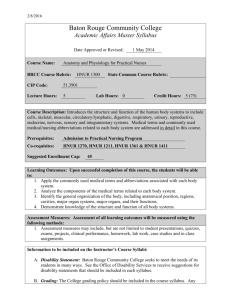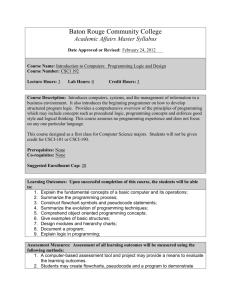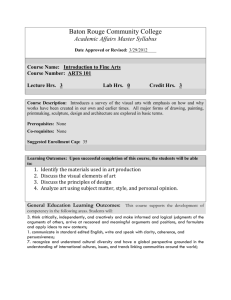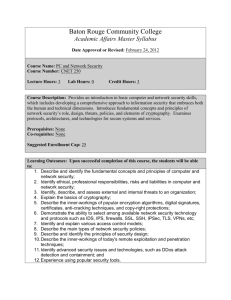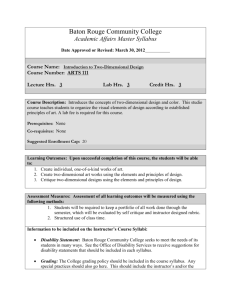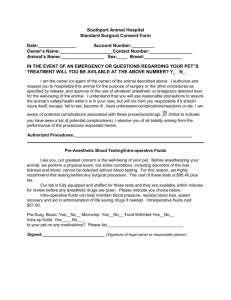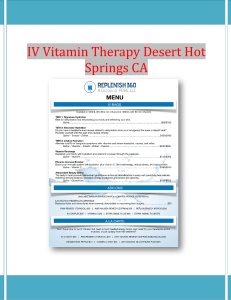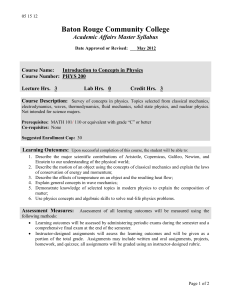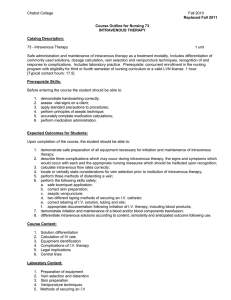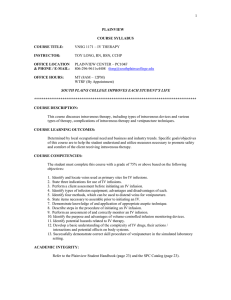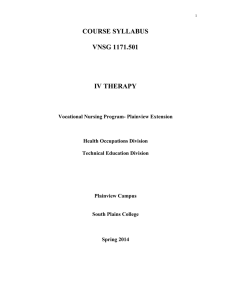HNUR_2611_MS - Baton Rouge Community College
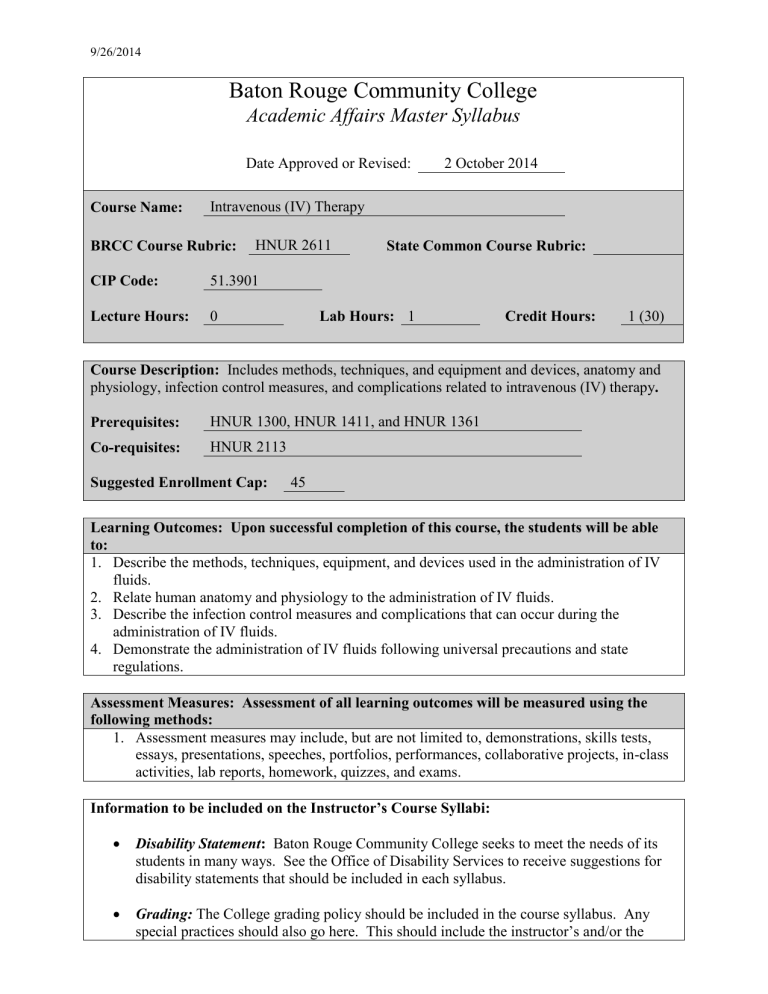
9/26/2014
Baton Rouge Community College
Academic Affairs Master Syllabus
Date Approved or Revised: 2 October 2014
Course Name: Intravenous (IV) Therapy
BRCC Course Rubric: HNUR 2611
CIP Code: 51.3901
State Common Course Rubric:
Lab Hours: 1 Credit Hours: 1 (30) Lecture Hours: 0
Course Description: Includes methods, techniques, and equipment and devices, anatomy and physiology, infection control measures, and complications related to intravenous (IV) therapy .
Prerequisites: HNUR 1300, HNUR 1411, and HNUR 1361
Co-requisites: HNUR 2113
Suggested Enrollment Cap: 45
Learning Outcomes: Upon successful completion of this course, the students will be able to:
1. Describe the methods, techniques, equipment, and devices used in the administration of IV fluids.
2. Relate human anatomy and physiology to the administration of IV fluids.
3. Describe the infection control measures and complications that can occur during the administration of IV fluids.
4. Demonstrate the administration of IV fluids following universal precautions and state regulations.
Assessment Measures: Assessment of all learning outcomes will be measured using the following methods:
1.
Assessment measures may include, but are not limited to, demonstrations, skills tests, essays, presentations, speeches, portfolios, performances, collaborative projects, in-class activities, lab reports, homework, quizzes, and exams.
Information to be included on the Instructor’s Course Syllabi:
Disability Statement: Baton Rouge Community College seeks to meet the needs of its students in many ways. See the Office of Disability Services to receive suggestions for disability statements that should be included in each syllabus.
Grading: The College grading policy should be included in the course syllabus. Any special practices should also go here. This should include the instructor’s and/or the
department’s policy for make-up work. For example in a speech course, “Speeches not given on due date will receive no grade higher than a sixty” or “Make-up work will not be accepted after the last day of class.”
Attendance Policy: Include the overall attendance policy of the college. Instructors may want to add additional information in individual syllabi to meet the needs of their courses.
General Policies:
Instructors’ policy on the use of things such as beepers and cell phones and/or hand held programmable calculators should be covered in this section.
Cheating and Plagiarism: This must be included in all syllabi and should include the penalties for incidents in a given class. Students should have a clear idea of what constitutes cheating in a given course.
Safety Concerns:
In some programs this may be a major issue. For example, “No student will be allowed in the safety lab without safety glasses.” General statements such as, “Items that may be harmful to one’s self or others should not be brought to class.”
Library/ Learning Resources: Since the development of the total person is part of our mission, assignments in the library and/or the Learning Resources Center should be included to assist students in enhancing skills and in using resources. Students should be encouraged to use the library for reading enjoyment as part of lifelong learning.
Expanded Course Outline:
I.
Review of Technical Standards
II.
Equipment, techniques and documentation used in initiating/monitoring and maintaining intravenous therapy
III.
Anatomical and physiological principles relating to intravenous therapy
IV.
Nursing responsibilities in preparation for and during venipuncture
V.
Maintenance and care of the patient with an infusion in simulated and clinical situations
VI.
Complications of intravenous infusions: measures for prevention and treatment
VII.
Fundamentals of fluid and electrolyte metabolism
VIII.
Principles of fluid therapy
IX.
Classification of intravenous fluids
X.
Major drugs used intravenously: precautions, doses and effects, rates of infusion, side effects and reactions
XI.
Administration procedures for blood transfusion, chemotherapy, and total parenteral nutrition: indications for use, equipment and supplies, and management of complications
2
